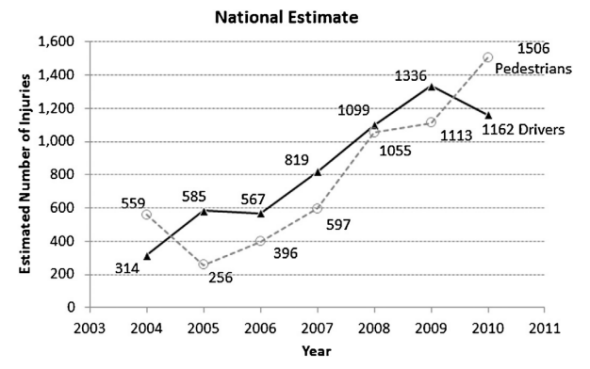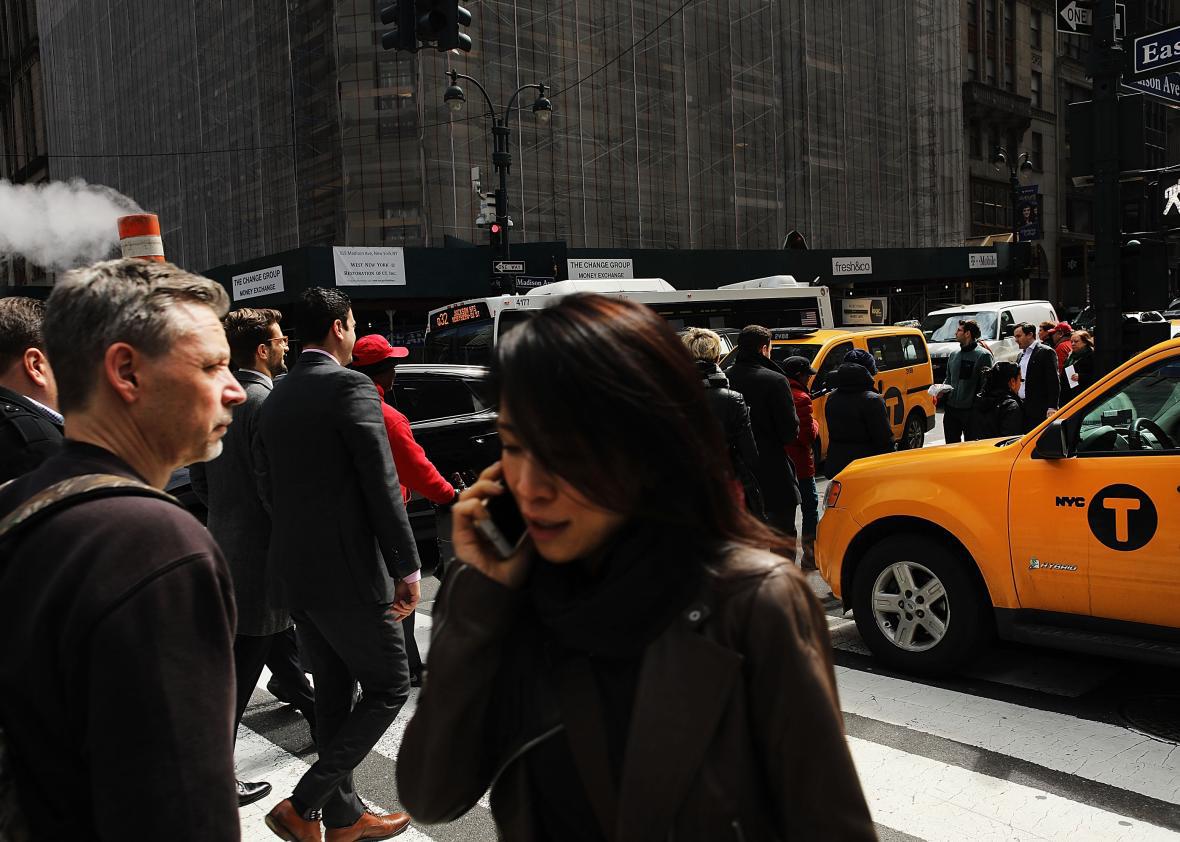If the fusty sigh of “Kids these days!” were a law, it would look something like the new Honolulu ordinance making it illegal to cross the street while looking at a cellphone. The fines will start in October at $35 and increase to $75 for a second offense and $99 for a third.
The law, signed by Mayor Kirk Caldwell on Thursday, is intended to lower the city’s pedestrian-fatality rate, which is among the highest in the U.S. In practice, however, it will inject police discretion into another routine of daily life—while perpetuating the media-driven myth that pedestrians are responsible for their own deaths.
There is an epidemic of American pedestrians getting killed by drivers. But there is virtually no evidence that they are being run over because they are too busy reading Slate on their phones.
There are a few reasons why the “distracted walking” narrative has taken hold. The first comes from a 2013 Ohio State University study that reported that the percentage of pedestrians visiting an emergency room for injuries sustained while using cell phones has risen, from less than 1 percent in 2004 to more than 3.5 percent in 2010. But the numbers of victims remains quite small—in the low four figures, according to Consumer Product Safety Commission data—and injuries related to cellphone use seemed to track neatly between pedestrians and drivers.

Courtesy Jack Nasar/Accident Analysis and Prevention
It is certainly true that overall, more pedestrians are getting killed by drivers. In March, the Governors Highway Safety Association projected the number of pedestrians killed on U.S. roadways would increase by 11 percent between 2015 and 2016, the steepest year-on-year increase since record-keeping began—and comes after a 9 percent jump between 2014 and 2015. If the projection holds true, 2016 would mark the highest number of pedestrian deaths recorded in more than two decades.
Guess what has also increased by record numbers in the past two years? The number of total roadway fatalities in the U.S, just 15 percent of which are pedestrians. In 2015, road deaths jumped by 8 percent. The first six months of 2016 appeared to show a jump of more than 10 percent over the same period in 2015.
It’s almost as if the cellphones responsible for rising pedestrian death totals are the ones that drivers cradle in their laps as they steer their two-ton machines at high speeds through densely populated urban areas. (Other countries have figured this out. In the United Kingdom, for example, where people also use cell phones, fatalities largely held steady between 2010 and 2015.)
Dig into the data and cellphones start to look like even less of a factor in pedestrian deaths. The Ohio State study (which, keep in mind, is four years old—a lifetime in cellphone use habits) reports that 70 percent of cellphone pedestrian injuries involved talking on the phone, which drivers are allowed to do in every state (though some require headsets). The more recent GHSA report also noted that 74 percent of pedestrian deaths occur in the dark, which suggests visibility, road design, and driver focus would have played a bigger role than pedestrian distraction. Furthermore, 15 percent of pedestrians were killed by drunk drivers, and more than one-third of pedestrian fatalities were themselves over the legal limit to drive. If Hawaii really wanted to police pedestrians to save their lives, it would ban drinking, period.
But this was not exactly a data-driven effort. While Honolulu does have one of the highest pedestrian death rates in the country, the city councilman behind the bill, Brandon Elefante, got the idea from talking to high schoolers who were worried about their friends wandering into the street.
I get why distracted walking is an attractive target. As a largely unsupported trend, it’s a media darling, and it’s kind of funny to see people using phones walk into lakes—especially compared to the banal carnage of car deaths. It also enables city politicians to act like they’re responding to a safety problem without actually cracking down on the people who are doing the killing—drivers. In a study of more than 3 million drivers, the driving behavior tracker Zendrive found that drivers with smart-phones use them on 88 out of 100 trips. Devices like speed camera and red light cameras, which document and punish dangerous driving, are treated as unacceptable extensions of the surveillance state. But giving the police license to detain anyone crossing the street while looking at a phone? Sure, fine.
Like jaywalking, the offense of phone-walking will be selectively enforced according to the whims of the city’s police force. It will serve, as Angie Schmitt writes at Streetsblog, “as a pretext for arbitrarily harassing pedestrians.”
The way to stop drivers from killing pedestrians is to make the roads safe. More than four in five pedestrian fatalities occur outside intersections, which is not surprising: Americans suburbs are designed for cars, and people without them are condemned to play Frogger. Too often, the response is to blame the victim—rather than reformin the system that puts people in danger in the first place.
